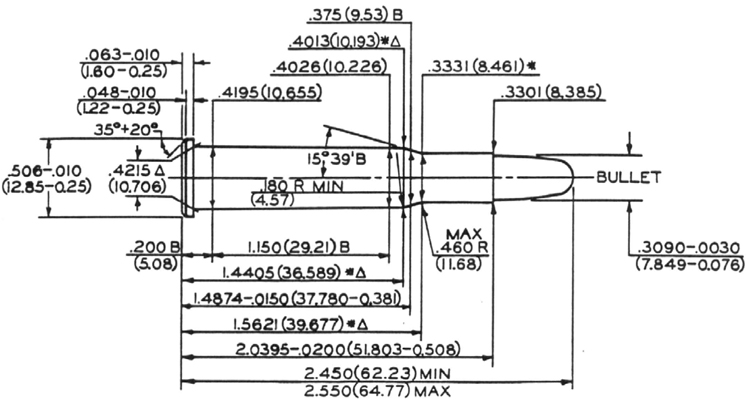
As you may recall from our five rifles article, the evolution of the Winchester to its Model 1894 designation was significant in that this venerable rifle reached its final stage of evolution. The rifle was re-chambered to that of the newly released .30 Winchester Smokeless which first appeared in Winchester's catalogue in August, 1895. It was to be the United States' first small bore, sporting cartridge which featured smokeless powder and we can imagine deer, the continent over, felt a cold wind that day. Perhaps no longer needed to win the West as it had before, the Model 1894 became the rifle that put dinner on your plate. Now, if you're thinking something is up and it certainly must be the .30-30 for which we speak, you'd be correct. Its more commonly associated name came to be when Marlin, having chambered their Model 1893 rifle with the .30-30 as well, dropped Winchester from its designation as a means to avoid advertising their competitor's name. The added 30 was reflective of its 30 grain load used.
Development of the .30-30 dates back to 1891 when the Winchester Repeating Arms Company began to experiment with smokeless powder with the goal of creating a higher velocity, smokeless cartridge which the company could market under their banner. After working with the US army on its .30-40 Krag for use in the Krag-Jorgensen bolt action rifle, later designated the Springfield 1982-99, Winchester elected to use .30 calibre a starting point. By 1894, with the Model 1894 nearing its end of development, the case of the .38-50 Ballard was chosen and modified so the case neck could seat their 160 grain, .30 calibre 'metal patched' (jacketed) bullet.
The .30-30 proved an instant success and by 1929 was touted as being the most popular civilian cartridge in the world - by Winchester no less. Now, some 120 years in existence, it remains a popular cartridge for hunters; touted for its effectiveness, accuracy, and versatility thanks to its widespread availability in various bullet weights, types, and modifications. Bullets see performance range from 1000fps to in excess of 2700fps to tackle all manner of game commonly hunted in North America; perhaps overkill on Rocky and definitely capable of Bullwinkle. But more than any other, the .30-30 almost appears as if it was specifically designed for deer hunting. The balance of power and recoil is virtually ideal, seeing the standard 150 grain factory load generating just 11lbs and change of recoil energy. By comparison, the .30-06 with the same 150 grain load very nearly generates double the recoil energy at roughly 21lbs.
It should be noted, and not by any significant measure versus comparable calibres, it is quite affordable to shoot. .30-30 can frequently be had for less than $1.00 a shot when using the more than amply found commercial grade ammunition, such as Federal's 150 and 170 grain options. By comparison, .30-06 will typically cost 25% more and offer no real benefits at open sight ranges hunters will be shooting from. Arguments can also be made for that of the rifles being used, seeing .30-30 chambered lever actions falling at or below some of the entry level options of semi-auto or bolt actions chambered in .223, .30-06, or even .300 Win Mag. With the Model 1894 so steeped in history, the nostalgic feeling of an effective level action can't be missed
That said, especially in wake of the modern alternatives, the .30-30 isn't particularly renowned for use on large game beyond 200m, which should serve to explain why it'll seldom be seen in a sport shooting application at greater distances - if just to name one. Thanks to its snubbed nose, it was for this same reason that the .30-03, which replaced the Krag .30-40, paled in comparison to the cartridges of the Mausers or Lee's fighting in the bogs of battlefield Europe by that time. However true that may seem, it's not much of a logical criticism one might hear from detractors of the .30-30. When one considers the cartridge was developed for use on an open sight rifle, given the relative primitiveness of glass optics and their inherently high costs at the time, it would seem only logical that the intended effective range of the said bullet on deer sized game would fall below the probable boundaries of the naked eye and open sight ranges.
Despite the advent of modern medium range cartridges with technically superior ballistics, the .30-30 remains a mainstay, and with reason, for many hunters. What made it relevant in its infancy remains so today for the .30-30. You see, regardless of the options abound, the circumstances which befell Bambi then continue to be the circumstances now; just as we expect those same circumstances to be present in the future. And it's for that reason we expect the .30-30 to be around for another 120 years and beyond.